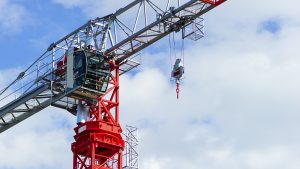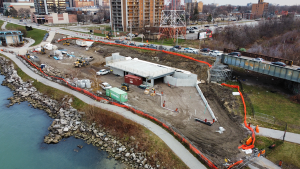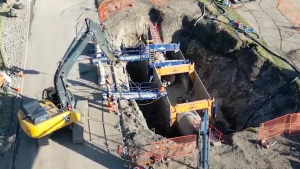A coroner’s inquest jury in Windsor, Ont. has come up with 10 recommendations to help prevent the kind of worksite deaths that occurred a few months apart in the city in 2016.
Two workers — electrician Rob Morneau, 44, and roofer Brian Izsak, 53 — died from their injuries after falling through roof openings while repairing roofs on industrial and commercial buildings.
On July 26, IIzsak died after stepping on a piece of sheet metal covering a one-metre-wide hole where a crew was installing a new roof at the Goodlife Fitness club. His employer, Rauth Roofing, was earlier found guilty by the Ministry of Labour (MOL) and fined $100,000 for not having a guardrail around the hole.
On Nov. 3, Morneau tripped backways and fell through a 51-by-51-inch plexiglass skylight while he was part of a crew repairing a roof at the Ventra Plastics plant. His employer, Vollmer Inc., had been fined $150,000 under the Ontario Construction Projects Regulations.
The five-person coroner’s jury made its recommendations after hearing three days of testimony from about a dozen people, including MOL inspectors, health and safety experts and co-workers of the men.
Among the jury’s recommendations are that the MOL revise its Working at Heights curriculum to have a section on hazards specific to skylights, that a daily record of site orientation and safety instructions be given to the business client to be kept for future projects, and that a spotter identify exposed areas until they are securely covered.
As well, the jury called for the national and Ontario building codes to be amended so that skylights be redesigned to be capable of withstanding a load of 2.4 kilonewtons per square metre or covered by a screen withstanding the same weight, or that there be a railing on all sides of between 36 and 42 inches high. As well, there should be permanent anchor points to attach fall-protection systems on non-residential buildings.
Skylight injuries have been a source of concern in the past.
In 2013, the MOL said employers and workers “may not fully realize” the potential for fall hazards. It made recommendations for those on worksites, including checking whether skylights can support a person’s falling weight, that there be shields to prevent falling through skylights, and that crews check if there is space to install temporary guardrails.
The coroner in this case, Dr. David Eden of Hamilton, said that among construction deaths “the two leading causes are falls and crush injuries.” He was optimistic the jury’s recommendations would be implemented.
“The particular issue of workers falling through skylights is now recognized as a priority continent-wide both in Canada and the United States and a number of jurisdictions are taking action to prevent that,” he said.
John Izsak, brother of one of the deceased workers, said he was generally satisfied with the recommendations. Now semi-retired, he was a project manager on a construction site in Richmond Hill, Ont., installing late-gauge steel wall panels on the day of his brother’s accident.
“I’ll be honest, when I was up on roofs with skylights, I didn’t think it was a hazard, now I do,” he said.
But Izsak said regulations should address all roof openings, not just skylights. And, he said that guardrails and screens must be anchored, creating more perforations through the roof membrane and making roofs more susceptible to leaks.
Izsak said that, with increasing focus on these hazards, he can foresee architects and builders “not using skylights anymore.”










Recent Comments